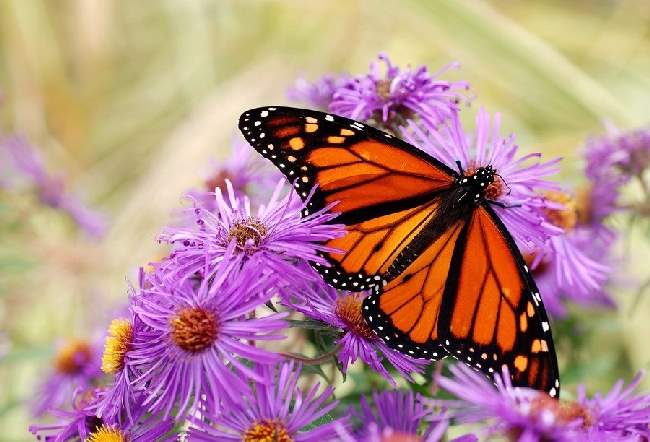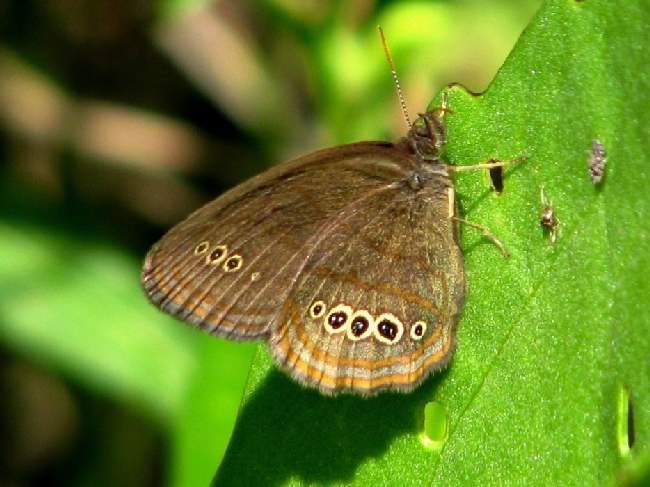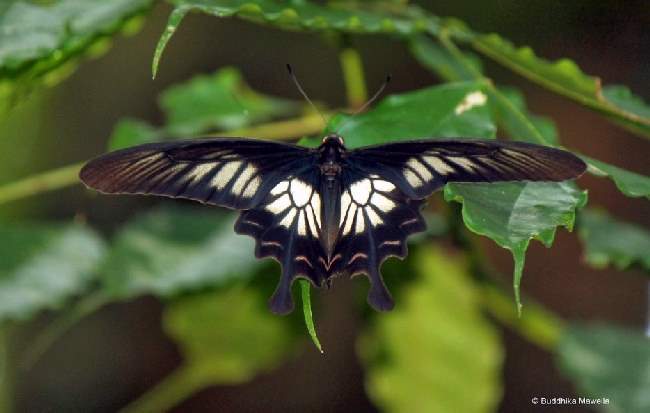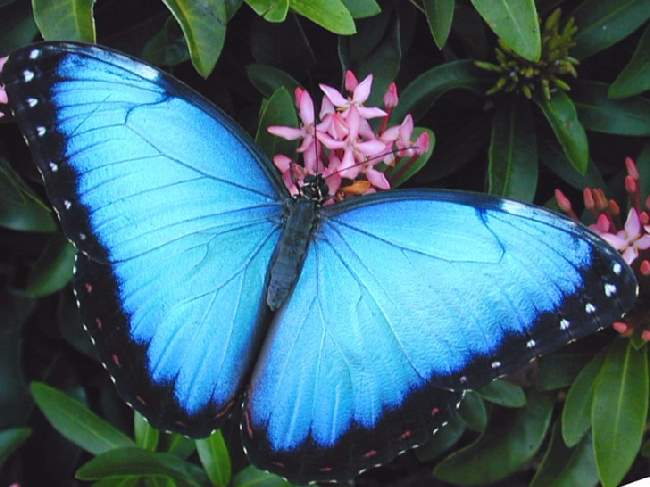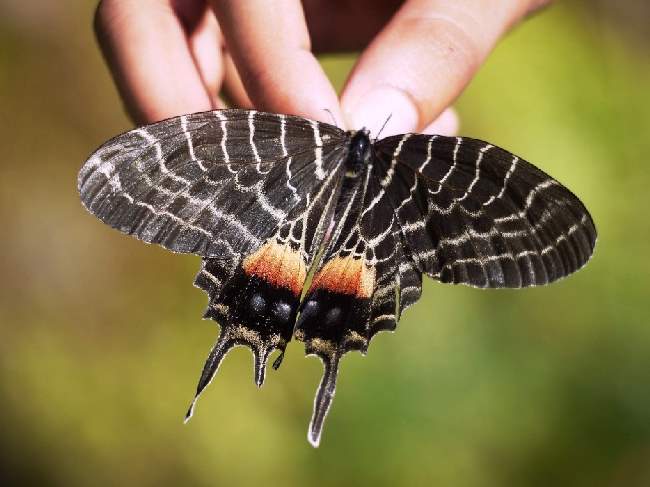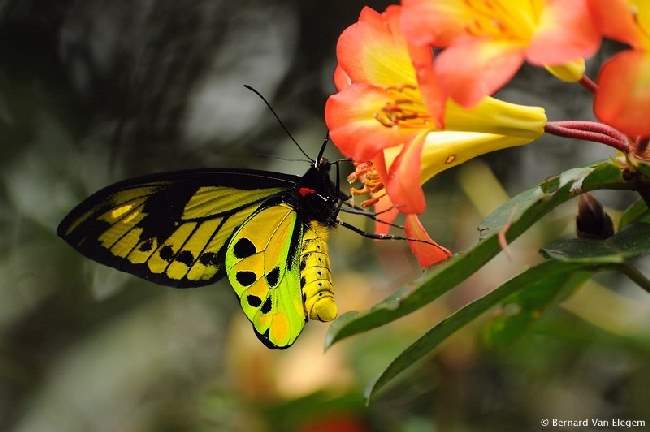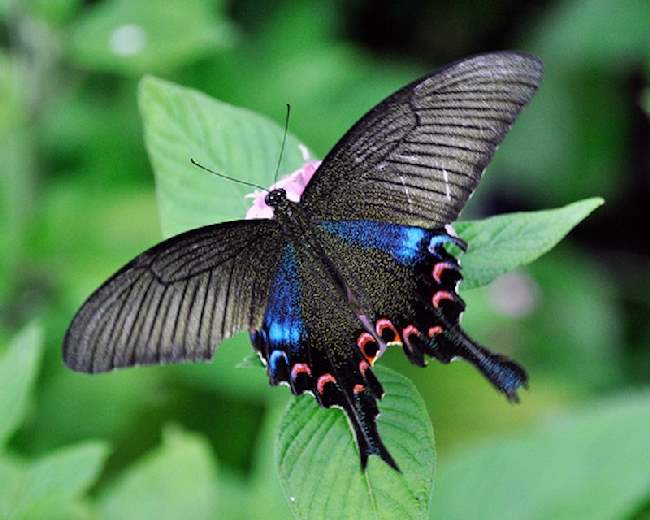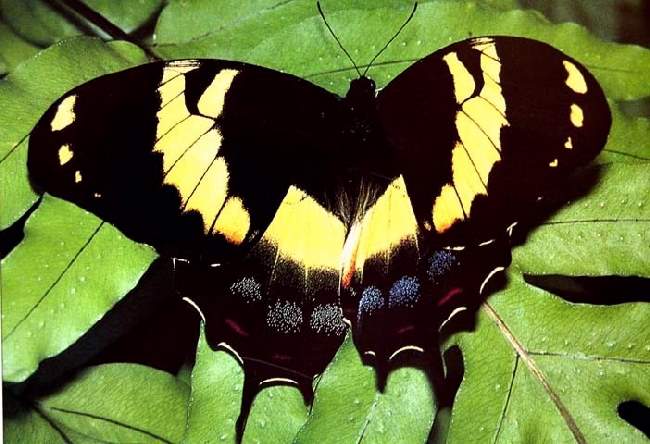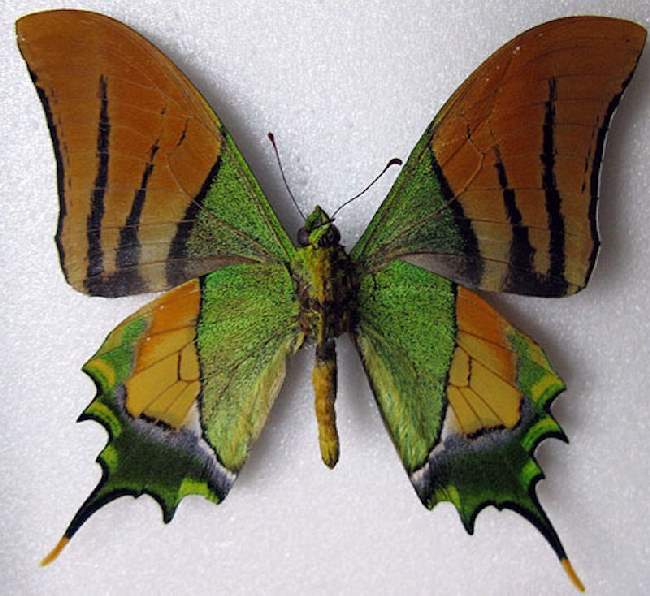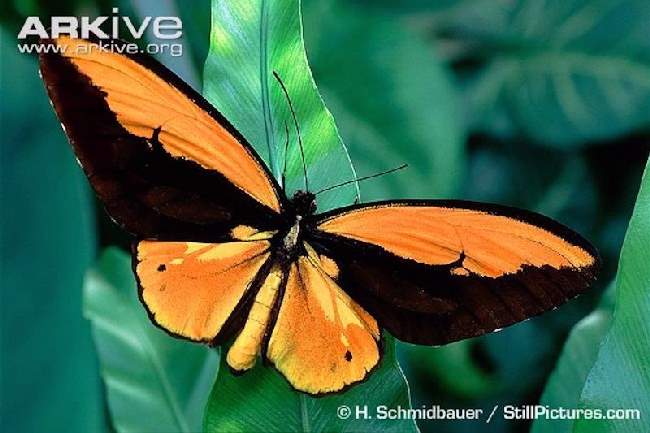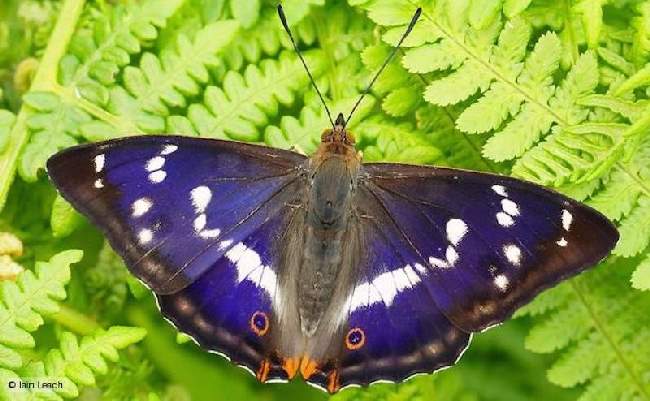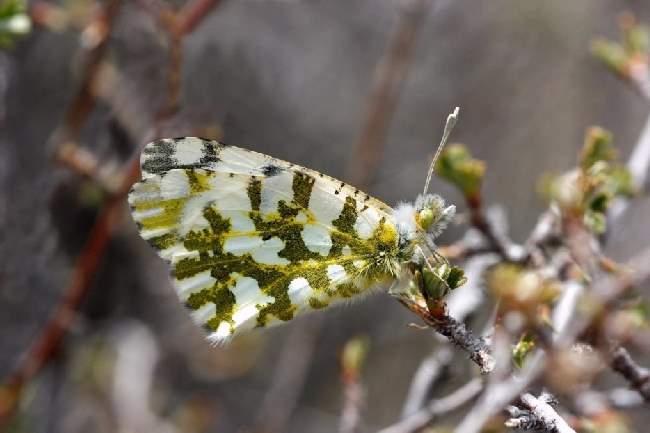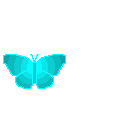 SHANGRALA'S
SHANGRALA'S
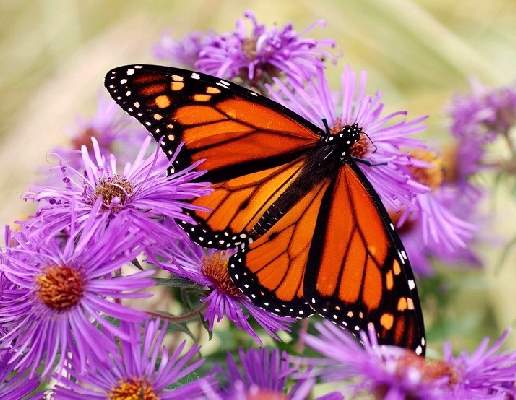
BEAUTIFUL
BUTTERFLIES!

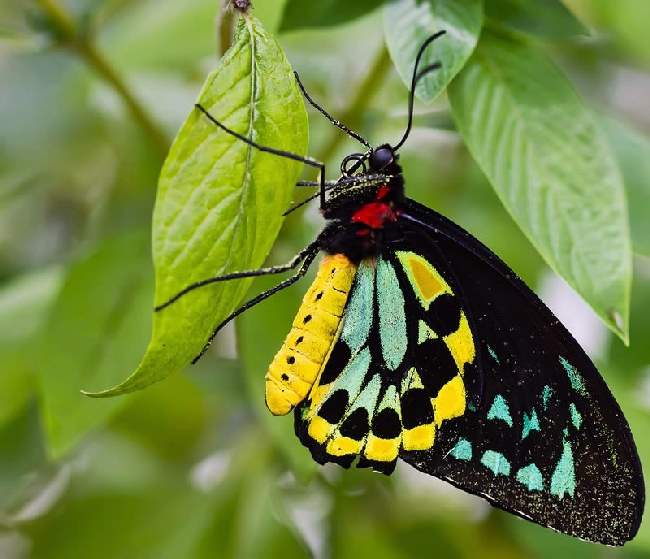
RICHMOND BIRDWING
This colorful insect is one of Australia's largest butterflies. Habitat
destruction and drought are two of the prime causes for the drastic
reduction in population of late. An invasive species of vine, which
causes 100 percent mortality rate among the Richmond Birdwing's larva,
is another reason there are so few left in Australia.
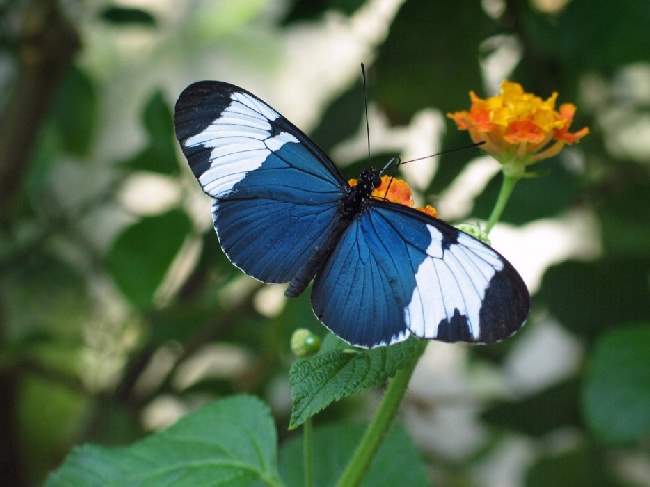
SAPHO LONGWING
These unique and dainty butterflies are native to Costa Rica, but have
also been seen in the rainforests of Belize. They are one of the few
species of butterflies that breed only on one specific plant, which may
be the reason for their higher rate of extinction.
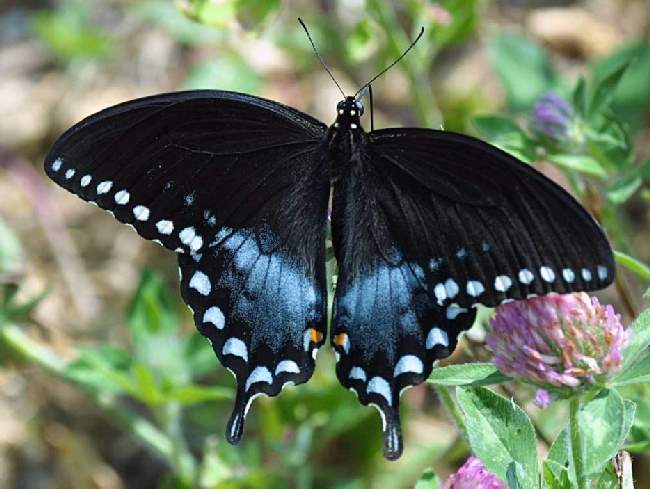
SPICEBUSH SWALLOTAIL
This North American butterfly likes to hang out in the Eastern states from
southern Canada to Florida and west to Oklahoma and central Texas. Marshes,
bogs, swamps and agricultural areas are some of its prime habitats.
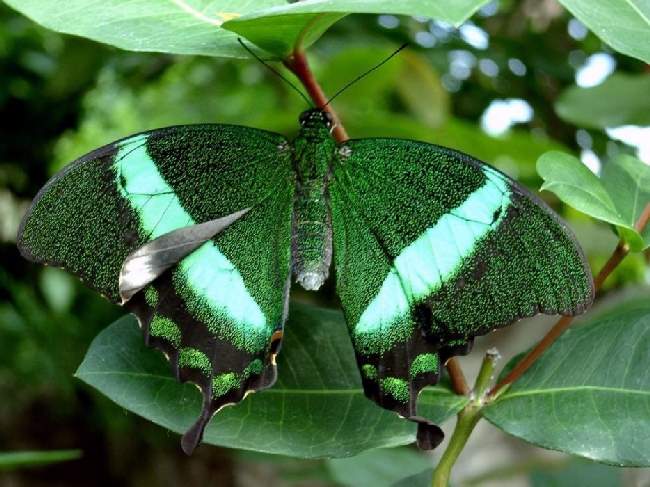
BANDED PEACOCK
This butterfly is found in Pakistan, India, Sri Lanka and parts of South Asia,
and is known as a fast flyer. It gets its name from its black color and
green wing bands, which are reminiscent of a peacock.
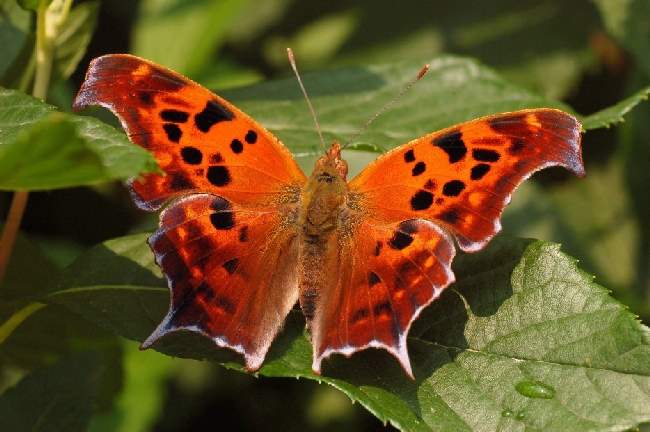
QUESTION MARK BUTTERFLY
This small North American butterfly likes to hang out in wooded areas
and city parks, or any area that has lots of trees and free space. Its
name comes from 'The silver mark on the underside of the hindwing is
broken into two parts, a curved line and a dot, creating a ?-shaped mark.'
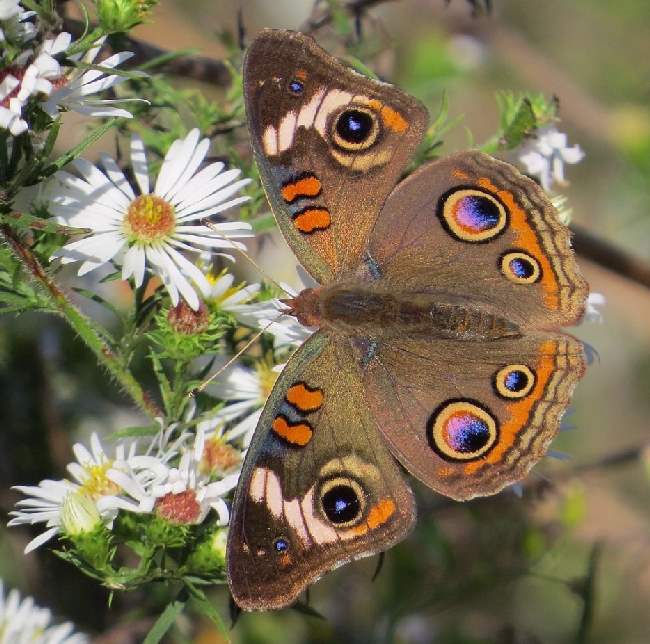
COMMON BUCKEYE
Don't let the name fool you! There's nothing boring about this plucky
little butterfly. Found in southern Manitoba, Ontario, Quebec, and
Nova Scotia and all parts of the United States except the Northwest,
it is most often spotted in the South, on the California coast, and
throughout Central America and Colombia. This probably explains why
it was featured on the 2006 United States Postal Service 24-cent
postage stamp.
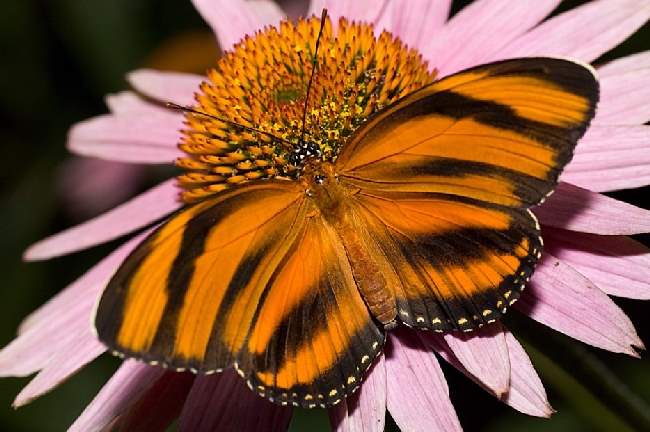
BANDED ORANGE TIGER
Found from Brazil north through Central America to central Mexico, this
butterfly performs a valuable service as a pollinator, feasting on
flower nectar while flashing its brilliant black and orange coloring.
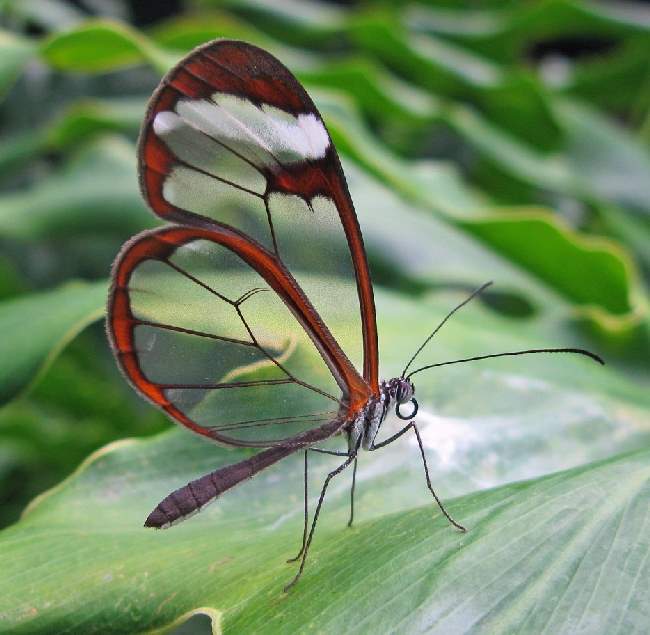
GLASSWINGED - Beautiful Butterflies
Native to Columbia, Bolivia, Peru, and Ecuador, the Glasswing butterfly
is large and features magical transparent wing panels. These determined
little pollinators don't like to rush their meals and may spend hours
on a single flower bloom while nectaring.
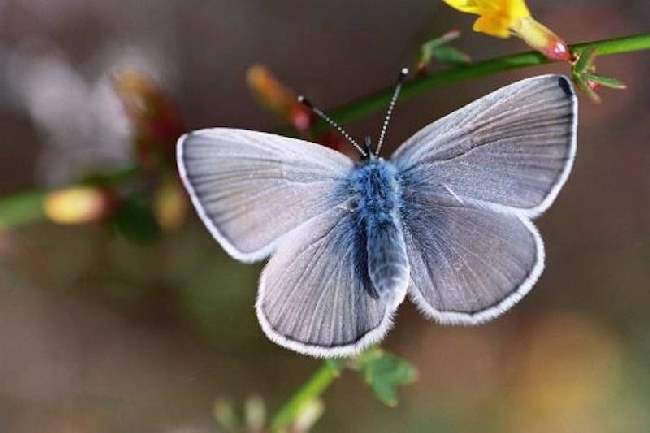
PALOS VERDES BLUE
This is considered to be the rarest butterfly in the world. At one point,
it was presumed extinct until researchers discovered a population clinging
to life in San Pedro, California in 1994. A captive breeding program since
then has been successful, but there are still only several hundred in the
wild. Unfortunately, the two plants on which is lays eggs are fast becoming
scarce on the Palos Verdes peninsula because of housing development.
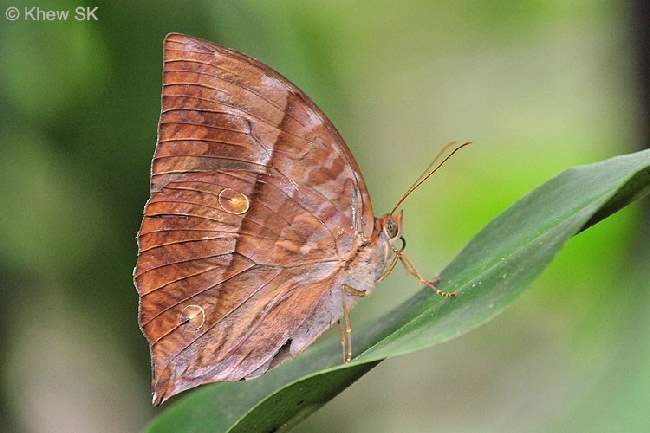
SATURN BUTTERFLY
This insect is found almost exclusively in the dark shady forest understorey
of Singapore's nature reserves. Their drab and cryptic undersides help camouflage
them among the forest leaf litter as they forage for food.
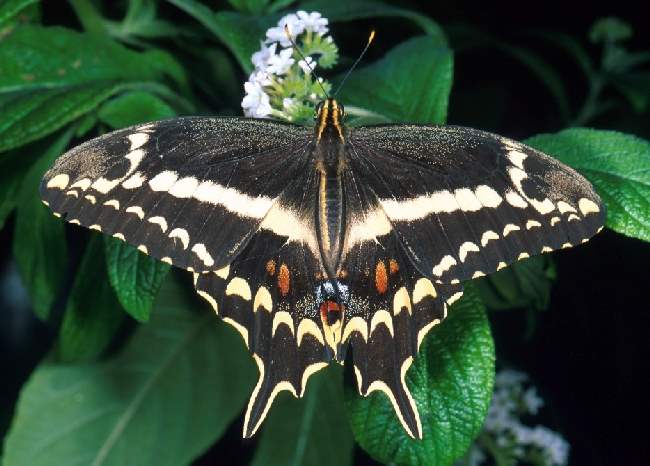
SCHAUS SWALLOWTAIL
The Schaus Swallowtail was first listed as threatened species in 1976 due
to the decline of its tropical habitat, mosquito control practices, and
over collecting. Since then, several hurricanes, in particular Andrew in
1992 and Georges in 1998, severely damaged Schaus' habitat, and butterfly
numbers plummeted as low as a few dozen. It is now officially endangered.
![]()
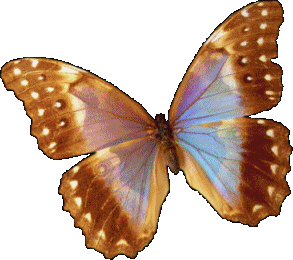
As you can see, habitat loss is a major threat to butterflies
around the world. Find out what butterflies are native to your
region, and start growing the plants on which they like to feed
and lay their eggs. You'll be rewarded with beautiful butterflies
in your garden! Learn more at: Help Save Monarchs.
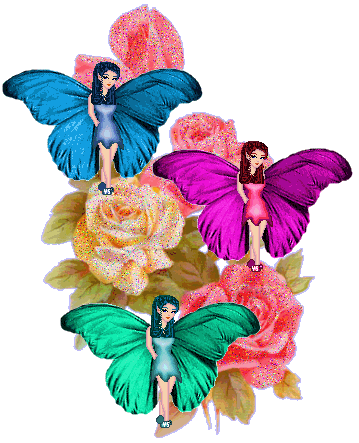
Be Sure To Share This. :)
![]()
SEE ALSO: Beautiful Butterflies 2!

^BACK To TOP^

For those of you who Want More FUN - Visit The Shangy Fun List! Variety is the
spice of life! The Shangy Fun List is an ezine packed full of Poems, Inspirational and
Heart Warming Stories. Jokes from G to slightly R, and Anything else that just
might make you SMILE! Join In The Free FUN!! ... :)
Yes! Click Here To GO TO THE ARCHIVES!-
![]()
![]()
Like This Page?
If you are looking for more, here are some good places to start:

I Believe!-
In The Pink!-
Colorful Birds 3!-
Butchart Gardens!-
Montreal Gardens!-
World Of Peacocks!-
Great Horned Owls!-
Magical Tiny Snails!-
Keukenhof Gardens!-
God's Most Beautiful!-
Albino Hummingbird!-
Cool Optical Illusions!-
Transparent Butterfly!-
Beautiful Rare Flowers 2!-
A-Z Animated Picture Images!-


 -To SHANGRALA-
-To SHANGRALA-
THANKS Goes To KAREN FRANKLIN And PHYLLIS SMITH (Bunni) For Sharing This.
![]()
Copyright © 1996 Netscape Communications Corporation. Mozilla is
a trademark of Netscape Communications Corporation.
Note: This is an Unofficial God, Jesus Christ, Family, & Cartoon Fan Site.
© All graphics representing Disney characters are copyrighted by Disney.
Likewise all other graphics & music Copyright © by their own Individual Artists.
I do not own any graphics on this site. If you do, please notify me
and I'll give
you proper credit, a link, or remove it immediately according to your wishes.
~*~ Copyright © 1997-2014 Elrhea M. Bigham ~*~
